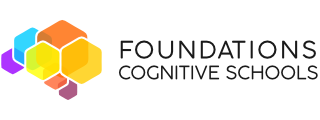
Story At-A-Glance
- Dyslexia is more than reading problems – While reading difficulties are the most recognized sign, dyslexia actually affects language processing across multiple areas including speaking, writing, memory, and even math.
- Early signs start before school – Parents can spot potential indicators in preschoolers through delayed speech, difficulty with rhyming, trouble remembering sequences, and challenges learning letters and sounds.
- Hidden strengths often emerge – Many children with dyslexia excel in creative thinking, problem-solving, spatial reasoning, and big-picture understanding, though these talents may be overshadowed by academic struggles.
- Recognition leads to support – Understanding the full spectrum of dyslexia signs helps parents advocate for their child and access appropriate interventions that can make a tremendous difference in their success.
When most people hear “dyslexia,” they immediately think of a child struggling to read, mixing up letters like “b” and “d,” or reading words backwards. While reading difficulties are certainly a major part of dyslexia, they’re just the tip of the iceberg. Understanding the full picture of how dyslexia affects your child can help you recognize signs earlier, understand their challenges better, and celebrate their unique strengths.
Dyslexia is fundamentally a language processing difference that affects how the brain handles written and spoken language. It’s not about intelligence – in fact, many brilliant thinkers throughout history have had dyslexia. Instead, it’s about how certain parts of the brain work together to process language information. This difference can show up in surprising ways that go far beyond the reading struggles most people associate with dyslexia.
The Early Warning Signs of Dyslexia: What to Watch for Before School
Many parents don’t realize that signs of dyslexia can appear long before a child starts learning to read. In fact, some of the most telling indicators show up during the preschool years when children are developing their foundational language skills.
Speech and Language Development
Children who later receive a dyslexia diagnosis often have a history of speech and language delays or difficulties. Your toddler might have been slower to start talking, had trouble pronouncing words clearly, or struggled to find the right words when speaking. They might substitute easier words for harder ones or use vague terms like “thing” or “stuff” when they can’t retrieve the specific word they need.
Some children with dyslexia also have persistent trouble with word retrieval – you might notice your child knows something but can’t quite get the word out, leading to lots of “um” and “uh” in their speech. They might describe things in roundabout ways because they can’t access the exact word they want.
Rhyming and Sound Awareness
One of the strongest early predictors of dyslexia is difficulty with phonological awareness – the ability to hear and manipulate the sounds in words. If your preschooler struggles with nursery rhymes, can’t seem to grasp rhyming games, or has trouble clapping out syllables in words, these could be early warning signs.
Children with dyslexia often find it challenging to break words apart into their component sounds or blend sounds together to make words. They might not notice when words sound similar or have trouble coming up with words that rhyme with “cat” or “dog.”
Memory and Sequencing Challenges
Many children with dyslexia have trouble with working memory and sequencing. You might notice your child has difficulty remembering multi-step directions, frequently forgets what they were just told, or struggles to learn sequences like the days of the week, months of the year, or their address and phone number.
These memory challenges aren’t about intelligence – they’re about how the brain processes and stores certain types of information. Your child might have an excellent memory for stories, faces, or spatial information while struggling with verbal sequences and instructions.
Beyond the Reading: How Dyslexia Affects Daily Life
Writing Challenges
While reading gets most of the attention, writing can be equally challenging for children with dyslexia. You might notice your child has messy handwriting, struggles to organize their thoughts on paper, or makes frequent spelling errors even with words they can read correctly. They might write letters or numbers backwards, have inconsistent spacing between words, or find it exhausting to put their thoughts into written form.
Many children with dyslexia are excellent storytellers verbally but struggle to translate those same ideas into writing. They might have wonderful, complex ideas but produce very simple written work because the act of writing itself is so demanding.
Math Difficulties
Surprisingly, dyslexia can also affect math skills, particularly in areas that involve language processing. Word problems can be especially challenging because they require both reading comprehension and mathematical reasoning. Children with dyslexia might also struggle with learning math facts, remembering the steps in multi-step problems, or understanding mathematical vocabulary.
Time and money concepts can be particularly tricky. Your child might have ongoing difficulty learning to tell time, understanding concepts like “quarter past” or “half past,” or making change when spending money.
Organizational and Time Management Issues
Many children with dyslexia struggle with executive function skills like organization and time management. You might notice your child frequently loses homework, has a backpack that looks like a tornado hit it, or consistently underestimates how long tasks will take.
They might have trouble with transitions, forget to bring home the right books, or struggle to keep track of multiple assignments and due dates. These challenges stem from the same language processing differences that affect reading – organizing thoughts, prioritizing tasks, and managing time all involve complex language-based thinking.
The Emotional and Social Impact
Frustration and Avoidance
Children with undiagnosed dyslexia often develop emotional responses to their learning challenges. You might notice your child becomes upset, angry, or defiant when faced with reading or homework tasks. They might claim they’re “stupid” or that school is “boring” when they’re really feeling overwhelmed and frustrated.
Some children become masters at avoidance, finding creative ways to get out of reading tasks or homework. They might become the class clown, develop mysterious stomachaches during reading time, or simply refuse to engage with written tasks altogether.
Social Challenges
Dyslexia can also affect social interactions in subtle ways. Children who struggle with word retrieval might have trouble following fast-paced conversations with peers. They might be slower to understand jokes, especially puns or wordplay, or have difficulty with social nuances that rely on language processing.
Some children with dyslexia also struggle with following multi-step social rules or remembering names and details about their friends, which can impact their social relationships.
The Flip Side: Hidden Strengths and Talents
While it’s important to understand the challenges dyslexia presents, it’s equally crucial to recognize the strengths that often accompany this learning difference. Many children with dyslexia have remarkable abilities that might not be obvious in traditional academic settings.
Creative and Visual Thinking
Children with dyslexia often excel at big-picture thinking and creative problem-solving. They might be talented artists, excellent at building with blocks or Legos, or show exceptional spatial reasoning skills. Many are natural inventors, coming up with creative solutions to problems that others might not consider.
Strong Reasoning Abilities
While they might struggle with reading comprehension, many children with dyslexia have excellent listening comprehension and verbal reasoning skills. They can often understand complex concepts when they’re presented orally and may surprise you with their insights and connections.
Persistence and Resilience
Children who’ve learned to cope with dyslexia often develop remarkable persistence and resilience. They learn early that they need to work harder than their peers for certain tasks, which can translate into strong work ethics and determination in areas where they excel.
Recognizing the Signs in Different Ages
Elementary School Years
During the elementary years, the signs of dyslexia often become more apparent as academic demands increase. You might notice your child reading slowly and with great effort, frequently losing their place while reading, or avoiding reading aloud. They might reverse letters or numbers, have trouble learning sight words, or struggle to sound out unfamiliar words.
Writing tasks might take much longer than expected, and your child might produce work that doesn’t reflect their verbal abilities. They might also start to develop negative attitudes toward school or express feelings of being “dumb” compared to their classmates.
Middle and High School
As children get older, dyslexia signs might shift. While basic reading skills may have improved, you might notice continued challenges with reading fluency, reading comprehension of complex texts, or written expression. Your teenager might avoid reading for pleasure, take much longer to complete homework than their peers, or struggle with note-taking and test-taking.
Time management and organizational challenges often become more pronounced as academic demands increase and students are expected to be more independent.
When to Seek Help
If you’re noticing several of these signs in your child, it’s worth seeking a professional evaluation. Early identification and intervention can make a tremendous difference in your child’s academic success and self-esteem. A comprehensive evaluation can help determine if your child has dyslexia and identify their specific strengths and challenges.
Remember that dyslexia exists on a spectrum – some children have mild difficulties while others face more significant challenges. Regardless of where your child falls on this spectrum, understanding their unique profile can help you provide the right support and advocacy.
Moving Forward with Hope
Discovering that your child has dyslexia might feel overwhelming at first, but it’s actually empowering information. Understanding how your child’s brain works differently allows you to support them more effectively and help them develop strategies that work with their strengths rather than against their challenges.
Many successful adults have dyslexia, including entrepreneurs, artists, scientists, and leaders in various fields. With the right support, understanding, and interventions, children with dyslexia can absolutely thrive academically and personally.
The key is recognizing that dyslexia is just one aspect of who your child is – it doesn’t define their potential or limit their possibilities. By understanding the full spectrum of how dyslexia affects your child, you can help them navigate their challenges while celebrating and developing their unique talents and abilities.
Your child’s journey might look different from their peers, but with your support and understanding, it can be just as successful and fulfilling. The hidden signs of dyslexia, once recognized and understood, become stepping stones toward finding the right support and helping your child reach their full potential.
Sources
- International Dyslexia Association. (2023). “Dyslexia Basics.” Retrieved from https://dyslexiaida.org/dyslexia-basics/
- Shaywitz, S. (2020). Overcoming Dyslexia: A New and Complete Science-Based Program for Reading Problems at Any Level. Vintage Books.
- National Institute of Child Health and Human Development. (2022). “What is dyslexia?” Retrieved from https://www.nichd.nih.gov/health/topics/dyslexia
- Lyon, G. R., Shaywitz, S. E., & Shaywitz, B. A. (2003). A definition of dyslexia. Annals of Dyslexia, 53(1), 1-14.
- Berninger, V. W., & Wolf, B. J. (2016). Teaching Students with Dyslexia, Dysgraphia, OWL LD, and Dyscalculia. Paul H. Brookes Publishing.
Note: This blog post is intended for educational purposes only. While the information presented is based on scientific research, individual situations vary. Please consult with qualified professionals for proper assessment and individualized recommendations.



